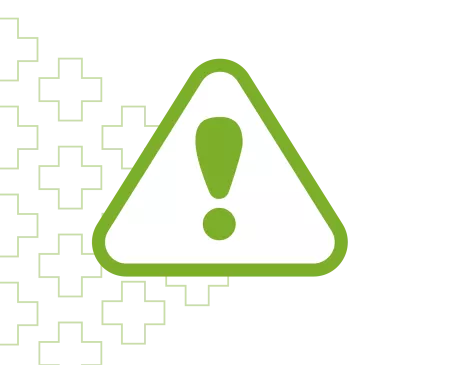Over the past two years, healthcare facilities’ physical environments have been re-prioritized due to the pandemic. Infection control has rightly taken center stage, taking form through newly constructed COVID units, refined ventilation capabilities, and more.
A consequence of this shift is that routine building-maintenance activities haven’t gotten the attention they need. Ensuring fire and life safety—once considered a core consideration—is a significant operational casualty.
But fire and life safety deserve the attention they once had. To do otherwise exposes your organization to potential survey vulnerabilities.
The Centers For Medicare & Medicaid Services (CMS) identifies the Life Safety Code (LSC) as a set of fire protection requirements designed to provide a reasonable degree of safety from fire. It covers construction, protection, and operational features designed to provide safety from fire, smoke, and panic.
Why now?
I expect that the current focus on infection control and prevention will continue. And it should—we’re not out of the woods yet! Although, a return to pre-pandemic survey norms are on the horizon. From my vantage point, they look imminent based on several factors.
Wave Goodbye to Waivers
One very important piece of the compliance puzzle is the eventual discontinuation of the Public Health Emergency. When it will happen is anyone’s guess; however, when it does it will mean the removal of existing LSC waivers, including:
- Placement of Alcohol-Based Hand Rub Dispensers – allowing for placement of additional dispensers that exceed amounts typically allowed by code and regulation
- Inspection, Testing & Maintenance of Life Safety Systems Equipment – allowing for modification of testing frequencies with certain exceptions relating to fire pump testing, fire extinguisher inspections, emergency generator testing, elevator testing; daily inspections of construction areas
- Modification of Fire Response Plan Education – allowing for temporary suspension of quarterly fire drills
- Modifications of construction requirements – allowing for construction of temporary walls/barriers between patients
With the waivers gone, you’ll have about two months to get your programs back up to standards.
A Temporary Lapse (with)in Reason
Are your facilities in accord with codes? Do they reflect current regulations? Based on what I've witnessed recently, chances are you’ve let some things lapse. That’s not to say you didn’t have good reason.
Most every facility and safety professional I know has had to recalibrate around the new normal of “command performances” in the form of multiple daily huddles, incident command sessions, Zoom meetings, etc. This further complicates the transition back to normal, as the complexities of time demands tend to drive compliance, as opposed to compliance driving the demands of time.
My point is that with waivers out of the picture, you’ll need to get your house back in order rather quickly.
What?
Emergency Room for Improvement
For the past several years, there has been a call to bring more diligence to the survey of the physical environment. Nowhere is this call more clear than from the CMS. They spell it out quite literally in their Annual Performance Evaluation of Accrediting Organizations (report card) on the performance of various accreditation organizations, including The Joint Commission.
The most recent annual report card reports on performance data collected during FY19, so the results don’t reflect surveys performed since the onset of the pandemic and subsequent declaration of the Public Health Emergency.
Even so, this is currently all that we (and TJC and other accreditation organizations) have to work with and it provides intel that can (and should) lead to preparations for what’s to come.
The Good ol’ days of LSC Surveys
The report card identifies the top LSC physical environment deficiencies observed during accreditation surveys. It should go without saying that if the CMS is noting these compliance issues, you should be, too.
| Facility Type | #1 Life Safety Problem Area | #2 Life Safety Problem Area | #3 Life Safety Problem Area | #4 Life Safety Problem Area | #5 Life Safety Problem Area |
|---|---|---|---|---|---|
| Hospitals | Fire/Smoke Barriers | Sprinkler Systems | Hazardous Areas | Means of Egress | Fire Alarm |
| Psych Hospitals | Means of Egress | Fire Alarm | Hazardous Areas | Fire/Smoke Barrier | Construction |
| Ambulatory Surgery Centers | Fire/Smoke Barrier | Construction | Fire Drill | Emergency Lighting | Anesthetizing Location |
The great thing—the actionable thing—is that the CMS breaks these issues down, providing specific areas of concern. These are the areas that accreditation organizations should be focusing on during the next survey cycles from a compliance standpoint.
In other words, this is where you should be focused on starting today.
Impact?
At the very least, we can expect renewed, heightened scrutiny in these life safety areas. But that’s not all.
Where there’s smoke…
In the past, surveyors had often moved on to other areas after identifying a few individual findings in a given category. That might not be the case anymore.
Based on the recommendations from CMS, upcoming surveys are much more likely to represent an in-depth focus on LSC conditions. This may include extensive investigations—above the ceiling, utility spaces, communications closets, and other areas previously relegated to state surveys.
Takeaways
Although it’s unclear how thorough your next LSC survey will be, there’s no doubt you’ll be better positioned with advanced preparation:
- Understand where you are in the survey cycle. Doing so will determine just how urgent your actions need to be.
- Have current life safety drawings. Without up-to-date drawings, you can’t perform an accurate assessment of your facilities. Speaking of that…
- Ensure a full-scale assessment of Life Safety Code compliance. This includes LSC considerations in your ambulatory care sites and physician practices.
- Evaluate your time and staffing resources. They must be able to manage a full-scale assessment.
Every day that goes by without a clear plan for ensuring LSC compliance is a day closer to a failed survey.
Taken together, however, the above four areas can help you sharpen your compliance efforts and position your organization to appropriately manage survey vulnerabilities.

Receive a CMS Adverse Action Notice? We can help!
If you need immediate assistance responding to regulatory and accreditation activity, please contact us today. Chartis Clinical Quality Solutions brings unmatched expertise helping clients develop Plans of Correction to address threats to accreditation or certification.


